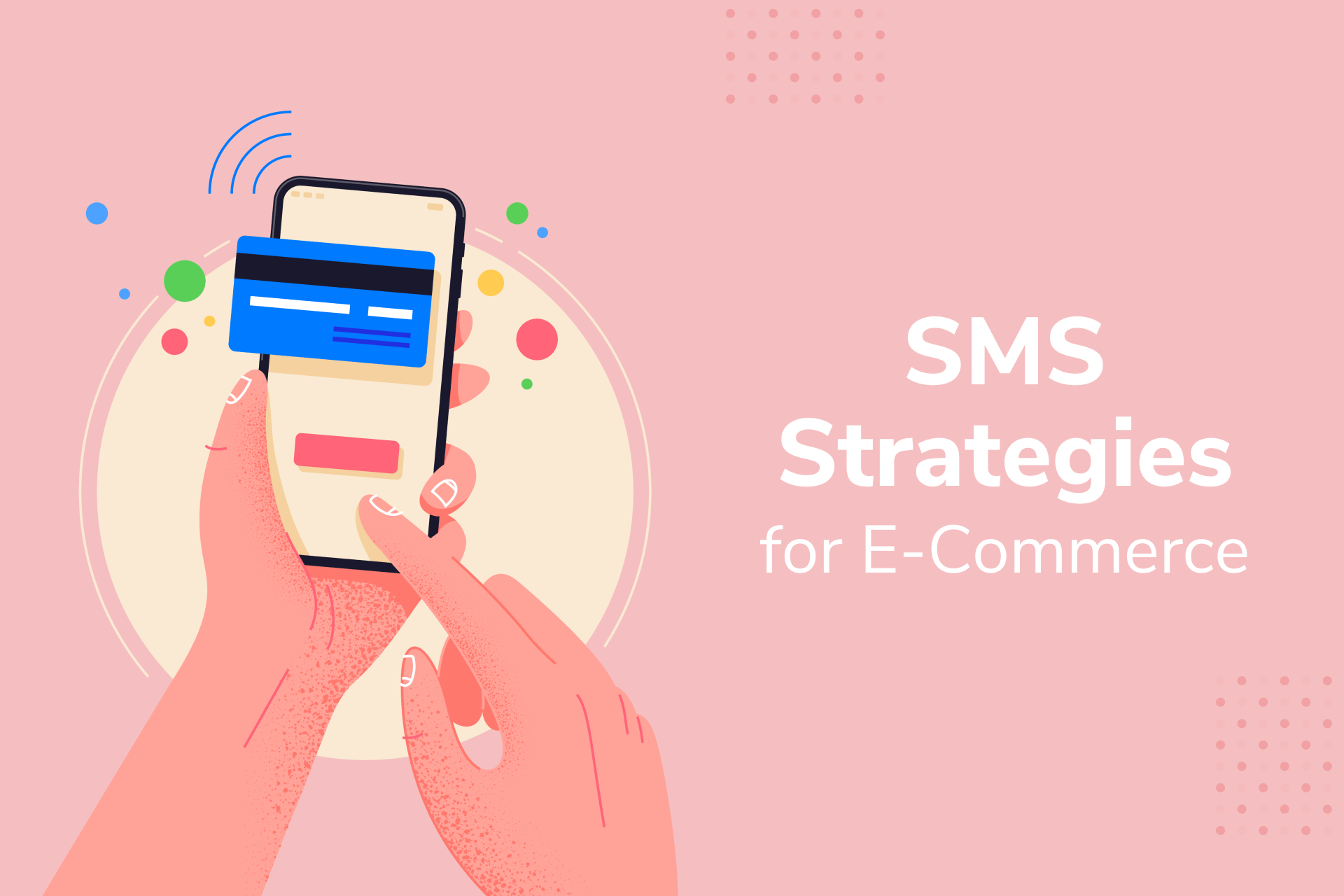E-commerce brands and consumers alike favor the direct, timely, and convenient nature of SMS.
This channel serves various purposes throughout the customer lifecycle, both before and after a purchase. It’s an excellent medium to acquire, retain, and convert e-commerce customers while strengthening brand connections.
Since SMS is a highly receptive and responsive— and therefore sensitive channel, your SMS messaging approach should focus on carefully adding value by sending the right message at the right time. To prevent over-messaging, SMS should be used strategically in conjunction with your other messaging channels. SMS helps guide customers through the buyer journey alongside these other channels.
SMS is becoming indispensable in the eCommerce industry as mobile shopping has taken flight after a year marked by dramatic changes in consumer shopping patterns.
Ecommerce businesses are using this channel for a variety of functions such as lead generation, customer communications, promotions, logistics, brand reinforcement, education, and more.
In 2021, mobile eCommerce sales are projected to reach $3.5 trillion and comprise almost three quarters of eCommerce sales.
High-Level Benefits of SMS:
- Connecting the mobile, web, and in-person shopping experience
- Personally connect with customers
- Increase loyalty
- Drive engagement
- Grow revenue
Below are five SMS strategies you should consider as an eCommerce brand.
1. Artfully Gain Opt-in Permission and Build Your Subscriber List
One of the first steps you’ll take to jumpstart your SMS strategy is earning user permission. Customers must give their “express written consent” before receiving promotional text messages from your business. SMS compliance is regulated by the Federal Communications Commission and outlined in the Telephone Consumer Protection Act (TCPA). Consumers must agree to receive texts in an opt-in with the required terms. Your business also must provide a clear opt-out mechanism for users who want to remove themselves from your subscriber database.
After getting a grasp on the regulations that surround SMS, you can jump into growing your subscriber list!
These days, businesses are getting increasingly creative in how they grow their SMS subscriber lists. Consider both the placement and the incentive of your opt-ins.
You can place an opt-in on your website banner, embed a form on one of your landing pages, or prompt users with a web pop-up. You can also encourage users to sign up for texts as part of a checkout or registration process. If you have a working email list, you can embed an SMS opt-in in your emails as part of your multichannel messaging approach. Another common strategy is using text-to-join campaigns, in which you ask customers to opt into your list by texting a keyword to a shortcode. Keywords can be placed on signage at your physical store, advertised on social media, promoted via email, or even included in your packaging or direct mail marketing materials!
It’s helpful to include incentives in your opt-ins to give customers an extra nudge to join your subscriber list. Your opt-in request can offer exclusive promotions or giveaways, or communicate the additional value the customer will gain by joining your list.
In your opt-in request, outline the types of messages users can expect from your brand and communicate what they will get as part of this interaction. You may then prompt users to register for an account, inform them about your in-person store locations, or share a piece of your brand story.
2. Send a Welcome Message
OK, so your subscribers have opted in, which means they’re now familiar with your brand. Now what?
When someone joins your SMS program, give them a great initial experience with your brand by sending a welcome message series. A welcome series is an early customer touchpoint and provides an excellent opportunity to introduce your brand voice and cultivate trust and affinity with your customers.
In your welcome series, you can get creative with the type of information you lead with. If you encouraged users to opt-in to receive an exclusive deal, you’ll want to deliver on this promise by sending the relevant promo code or link. You can also prompt users to take action on another channel by inserting a link to a registration form on your website, for example. Your welcome series is a great opportunity to acquaint customers with your brand personality by customizing your messages with rich media, including images, gifs, video, audio, and emojis.
When crafting your welcome series, think about how the copy and content can convey the tone and style of your brand.
3. Send Order and Delivery Updates
Sending your customers timely updates around their orders is convenient and useful. With timely order updates, you can text your customers to confirm a purchase, communicate an item’s estimated delivery timeline, and provide real-time status updates if an order is delayed or expedited. SMS is the best channel for sharing tracking and delivery information because most users will view these alerts in real-time. Helping your customers track their deliveries will help to connect web, mobile, and in-person brand touchpoints. Providing a seamless and stress-free delivery experience will also remove friction from the customer experience and keep your customers coming back.
4. Promote Special Offers
In addition to being well-suited to transactional messages, SMS is also a powerful medium for promoting your products and services.
Promote special offers such as limited-time deals, product updates, or new merchandise arrivals. You can even cross-promote partners and sponsors. The art of sending offers is delicate because you don’t want to send messages too frequently or share irrelevant deals. Segmentation and personalization can enhance the effectiveness of these types of messages. Consider segmenting your audience to send them hyper-relevant promotions. For example, you may trigger an SMS advertising a 50 percent off peanut butter sale to a segment of your audience that recently browsed jelly on your website. Use behaviors, time zone, and past purchase data to increase the relevancy of your one-off promotional messages to maximize your ROI with SMS.
5. Flag Abandoned Carts
Consumers live in a highly distracted digital ecosystem where online or mobile shopping activities are often interrupted by other activities. In cases when a consumer forgets to check out with their cart, what better way to nudge them towards that purchase than with a friendly SMS reminder? Sending SMS abandoned cart reminders is another great multichannel strategy that connects with the user across digital platforms.
Trigger abandoned cart SMS when a user forgets to check out on your website or mobile app to encourage them to complete their purchase. In your message, make sure to streamline the purchase by linking directly back to the checkout page.
Learn More About Text Message Marketing
Want to start using SMS but not sure where to begin? Check out our SMS eBook to learn fundamental SMS messaging strategies, use cases, best practices, and tips for leveraging SMS across industries. Get The Comprehensive Guide to SMS Marketing eBook.
Get Started with OneSignal
OneSignal is designed to help you send notifications and seamlessly manage your user communication across every channel, including bulk SMS, mobile push notifications, web push notifications, in-app messaging, and email. Our platform is quick to set up and makes it easy to customize and automate your text messaging strategy without doing any development work. If you don't have a OneSignal account, you can create one for free and start sending push notifications to your users today.
Get Started for Free



